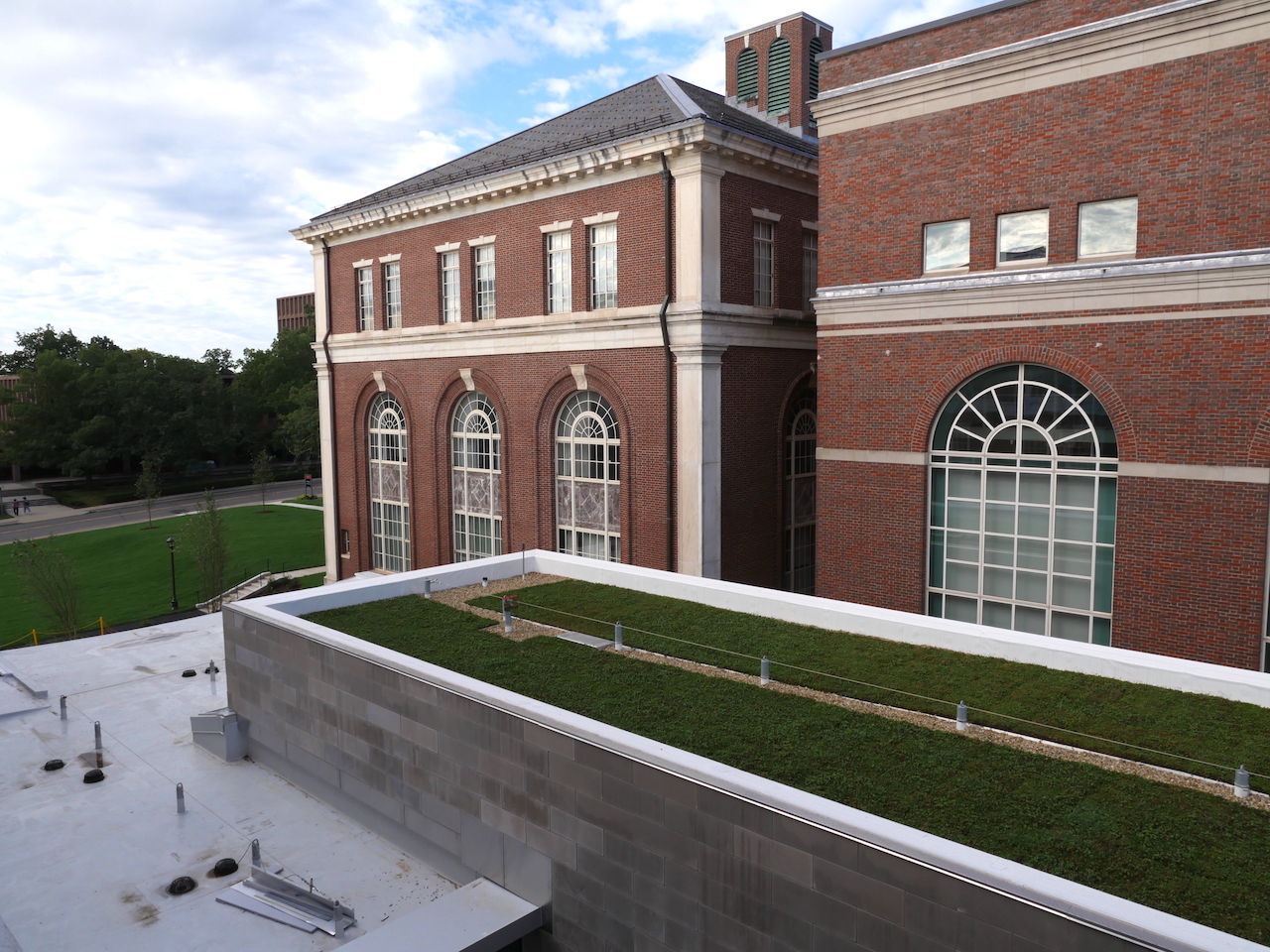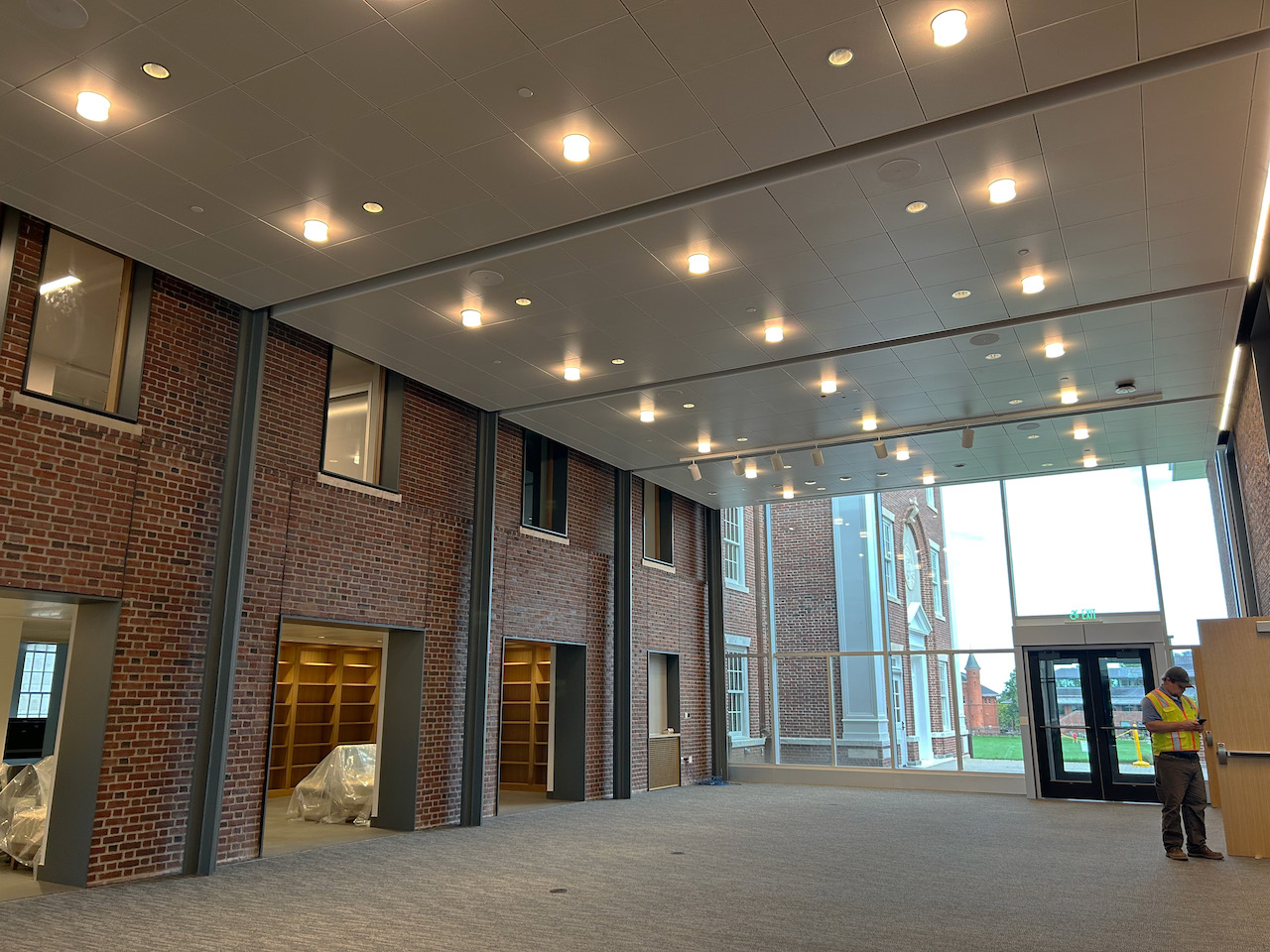
c/o Rose Chen, Assistant News Editor
The University completed construction on the Public Affairs Center (PAC) and the adjacent art gallery for the Davison Arts Center over the summer and plans to open the building to the public in Spring 2024. The art gallery will connect the PAC to Olin Memorial Library, and the PAC will host spaces for classes, meetings, and faculty offices for the College of Social Studies (CSS) and the Economics, Government, and History Departments. The four departments will move into the building during winter break.
The renovated building increases accessibility to Olin through the east entrance from College Row with a combination of ramps and a new elevator, and classrooms will have large projectors to aid with remote learning as COVID-19 continues to impact the campus community. Although construction is complete, an ongoing planning project will determine the future of the swing spaces currently occupied by the four departments, and final touches continue to be added to the building this semester.
“We will be receiving our certificate of occupancy in September and then continue to install furniture and audio-visual equipment,” Senior Project Manager Michael Rosalie wrote in an email to The Argus. “The building will open for classes for the start of the spring semester.”
The project team placed an emphasis on nature and sustainability. Many of the rooms feature radiant panels, which use copper pipes and water to warm and cool the space in the most efficient way. There is a green space on the roof of the PAC, which is visible from the upper floors of the PAC and Olin. Windows open the space, providing natural light and ventilation.
“The new building…is much more open and spacious than the old PAC and will create so many opportunities for teaching and collaboration,” Henry Merritt Wriston Chair in Public Policy and Professor of Government and Environmental Studies Marc Eisner wrote in an email to The Argus.
The previous PAC was a reconstruction of Harriman Hall, a dormitory built in 1927 which was then converted and expanded in 1954 to become a classroom space. Historically, the PAC was one of the most utilized classroom buildings on campus, with space for up to 3,570 students per semester. After years of use, University faculty and students agreed that the space was no longer suited to new systems of learning at the University.
“Over the decades since 1954, there had been a shift away from the traditional teacher-centered-classroom to spaces that would support more active, student-centered, collaborative pedagogies,” Eisner wrote.
A 2015 campus survey conducted by Sasaki, a design firm hired by the University to guide campus development in collaboration with Eastley + Partners, identified the PAC as an unpopular classroom space, as its design made conversation and collaboration difficult. Plans for renovation to improve the building’s accessibility and utility began in 2017 but were delayed.
“The PAC project was originally planned to begin construction during the summer of 2020, however it was postponed a year due to COVID,” Rosalie wrote.

c/o Rose Chen, Assistant News Editor
The project’s renovations and building additions covered 76,000 gross square feet (GSF), including the demolition of the 8,000-GSF east addition that was built in 1954 and the connection between the PAC and Olin. The project entailed the construction of a new 20,000-GSF addition for classrooms, as well as the replacement of the old PAC-Olin link with a 5,000-GSF Davison Art Center gallery.
Retaining parts of the PAC’s original structure and history while adding sustainable and accessible building elements was a central goal of the construction process. The staircases feature exposed brick from 1927, and the project team matched this brick in their construction of the new forum space. In addition, the new Art Gallery uses a limestone façade similar to the Center for the Arts (CFA) buildings.
“It’s a beautiful building and somehow manages to be both a new building and a historical building,” President Michael Roth ’78 said. “So I’m just delighted with the hard work everybody’s put into making it happen.”
Wesleyan Student Assembly Community Committee Chair Asija Qyteza ’24, who formerly chaired the Government Majors’ Committee, worked with PAC Building Steward and Administrative Assistant for the Government Department Susan Lundgren-Regan to create a time capsule to commemorate the renovation of the Public Affairs Center.
“The pandemic was a very critical time for political reflection,” Qyteza said. “Having been involved with leadership positions on campus, I have seen first-hand how the pandemic adversely impacted institutional memory. Clubs didn’t have as much involvement from students, including the Government Majors’ Committee.”
The time capsule will be buried once the landscaping is complete, and it will be unearthed in 2049 during the 25-year reunion of the class of 2024, which entered the University during the first full school year of the COVID-19 pandemic.Qyteza stressed the importance of a time capsule in allowing future generations to reflect on the class of 2024’s time at the University.
“We are the generation that has just recovered from the pandemic,” Qyteza said. “This time capsule is a tangible representation of the evolving political and social landscape, and I think it’ll be really cool to see the PAC building offer a consolidated space for those students who want to participate in that climate.”
Rose Chen can be reached at rchen@wesleyan.edu.